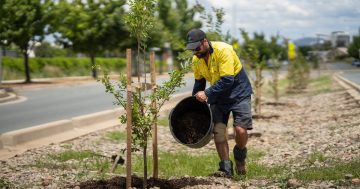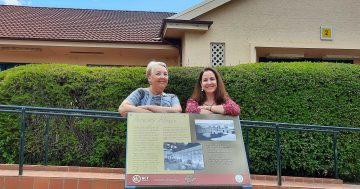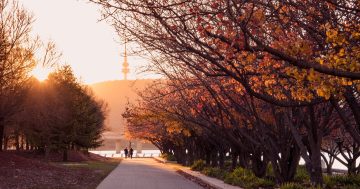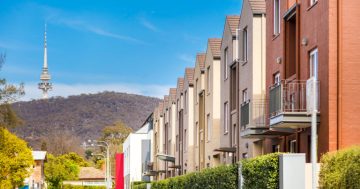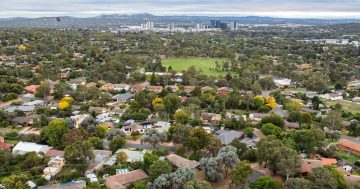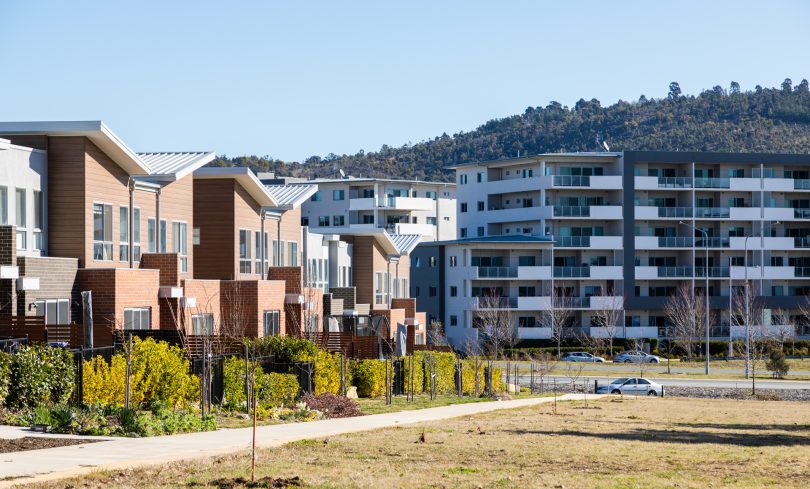
The proposed planning changes should mean more trees and green spaces in developments. Photo: Michelle Kroll.
The amount of tree cover required in multi-unit developments will be increased from 15 per cent to 20 per cent among revised proposed changes to the Territory Plan.
The ACT Government has today (29 October) released proposed changes to Draft Variation 369, which is designed to implement the Living Infrastructure Plan that aims for 30 per cent canopy cover or equivalent and 30 per cent permeable surfaces in urban areas across Canberra by 2045.
There are currently no rules requiring ACT residential landowners to have tree canopy cover on their block, and there are concerns that the shrinking of residential green space and fewer trees on blocks is contributing to heat island effects.
The changes announced today are based on responses to community consultation and will be referred to the Standing Committee on Planning, Transport and City Services with a view to the government introducing them in 2022.
The proposed changes for new developments will introduce a new site coverage requirement for single dwellings and multi-unit development in residential areas and require at least 20 per cent tree canopy coverage for higher density multi-unit developments.
The tree canopy was the key issue during consultation and drew the most responses from people concerned that 15 per cent was too low and that it should be increased to 30 per cent or more.
The Greens had pledged to fight for the increase and were coming under pressure to deliver, with the North Canberra Community Council recently writing to all of their MLAs about DV369.
The government is taking a staged approach to increasing tree canopy cover so the community and industry can adjust.
The changes will also increase the amount of green space on residential blocks by updating the definition of ‘planting area’ to exclude areas such as patios and swimming pools.
The amount of planting area required will also be increased.
The amount of private open space required for mid-sized blocks is to be not less than 40 per cent of the block area with at least 20 per cent to be planting area, while the site coverage requirement is to be a maximum 60 per cent of the block area.
For compact blocks, the private open space requirement is to be not less than 30 per cent of the block area with at least 15 per cent to be planting area, while the site coverage requirement will be a maximum of 70 per cent.
The criteria have been strengthened by requiring that the design of open space design reduce urban heat island effects.
Minimum mature canopy dimensions for various sizes of trees have also been added – 4 metres for a small tree, medium 6 metres and large 8 metres.
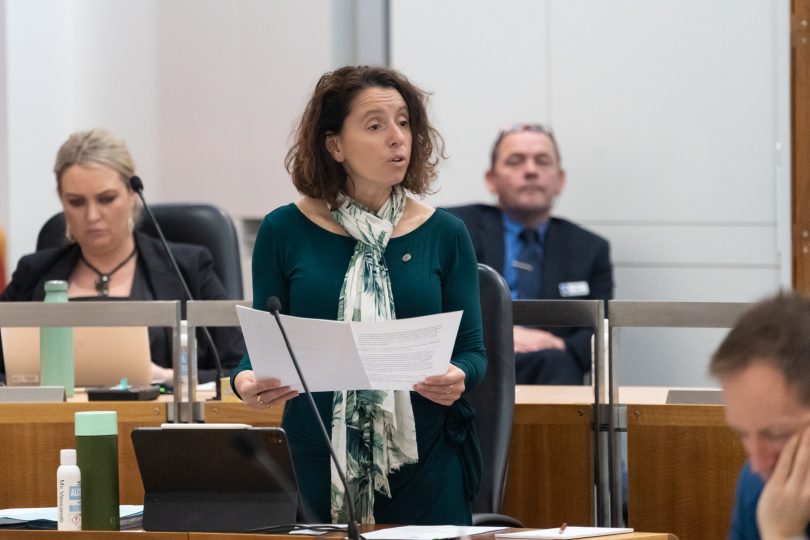
Environment Minister Rebecca Vassarotti. The Greens had committed to raising the tree canopy cover figure. Photo: File.
Minister for Planning and Land Management Mick Gentleman said DV369 would increase tree canopy coverage and provide more green space in Canberra.
“We have listened to Canberrans and will ensure that as our city becomes denser, it will retain its Bush Capital feel,” Mr Gentleman said.
“We are also responding to concerns that big houses lacking green space are heating our city. Developers and builders will need to include bigger backyards and green spaces for all new developments, ensuring our growing city remains sustainable while retaining its character.”
Environment Minister and Greens MLA Rebecca Vassarotti said the draft variation would deliver on key actions outlined in the ACT Government’s Living Infrastructure Plan.
“Draft Variation 369 will significantly strengthen the contribution that residential developments make to the tree canopy and green infrastructure, and reducing the impacts of climate change,” Ms Vassarotti said.
She said the changes specified site footprints on each residential block type to ensure there is sufficient soil and green space and that trees are planted and will be able to thrive.
“DV369 and other planning reforms are complemented by the government’s ongoing work to implement the Urban Forest Strategy, including significant legislative reform,” she said.
“This will ensure that living infrastructure is embedded across our city and that we reach our 30 per cent canopy cover target by 2045.”
The government says it will next look at introducing tree planting and green space requirements in the Estate Development Code and for residential buildings in Commercial Zones.
This is anticipated as part of the new Territory Plan delivered under the Planning System Review and Reform Project.
The proposed changes to DV369 come as a new report to the Legislative Assembly estimated tree canopy cover in 2020 at 22.5 per cent of Canberra’s urban footprint.
The report, which used Light Detection and Ranging (LiDAR) analysis, indicates that older suburbs in Central Canberra and Woden Valley have well-established tree canopy cover at 28.2 per cent and 30.64 per cent, although in need of tree replacement, whereas the newer suburbs of Gungahlin (14.3%) and the Molonglo Valley (8.62%) have substantially less.
The government says it will plant 54,000 trees by 2023-24.













